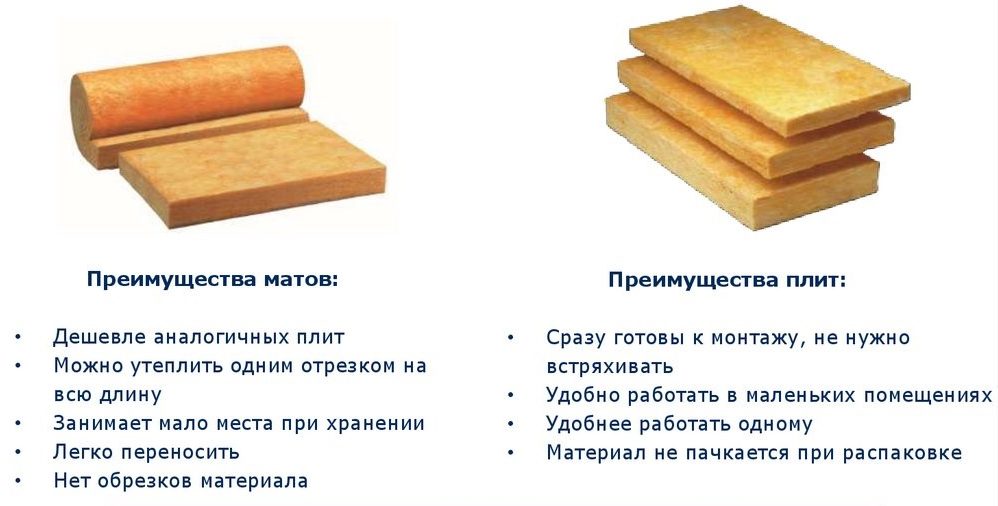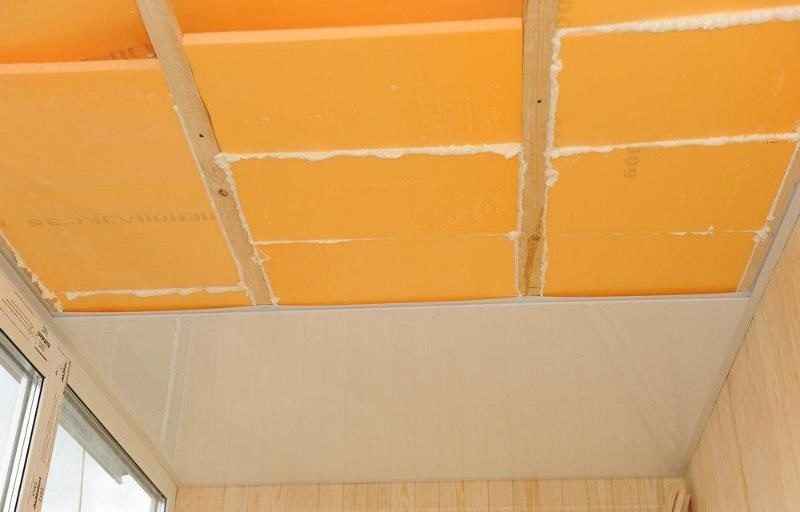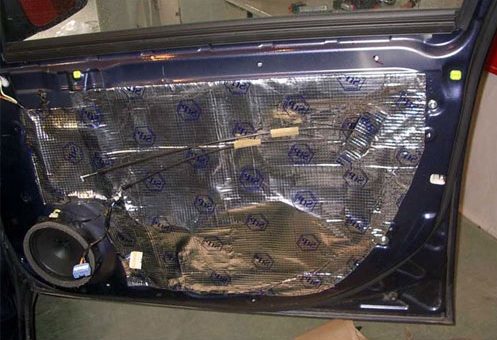City noise has become a constant companion of the townspeople. The sounds of buses passing under the windows, the echoing hoots of car stereo subwoofers, police and fire sirens, the howling of anti-theft alarms beat on the nerves and other "delights" of civilization daily poison the existence of millions of citizens. And if you add to this the cheerful neighbors celebrating some kind of anniversary until the morning, or the sound of a punch behind the wall, life seems like hell. Our apartment hives are built in such a way that you can hear a neighbor's vacuum cleaner, washing machine, or a baby crying. What can we say about punchers. Someone endures all his life, and by retirement becomes an absolutely sick person, because "all diseases are from the nerves." For those who are looking for a way out of this situation, the editors of the site "bestx.htgetrid.com/en/" offers an overview of the best materials for noise insulation for 2020, based on customer reviews and expert recommendations.

Content
- 1 Noise classification
- 2 What are the noises
- 3 Soundproofing
- 4 Noise isolation
- 5 Noise levels and their effect on humans
- 6 Acoustic characteristics of sound-insulating and sound-absorbing materials
- 7 Airborne noise protection
- 8 Rating of quality materials for noise insulation of premises
- 9 Sound insulation of structures
- 10 A few words about soundproofing cars
- 11 Which company is the best material to buy
- 12 Criteria for choosing a soundproof material:
- 13 We block impact and structure-borne noise
Noise classification
To isolate your home from extraneous noise, you need to understand the source and nature of its occurrence. The correct choice of sound-absorbing materials, the estimated scope of work, the final amount of costs for the implementation of measures depend on this.
What are the noises
Depending on the source of occurrence, the following types of noise are distinguished:
- Air. Sound waves generated by various sources outside the building are transmitted through the air and penetrate into the apartment through leaks between the wall railing and window fillings, poor-quality sealing of joints in large-panel houses, the sounds of colloquial speech and working household appliances that penetrate the room from neighbors through adjacent walls and ceilings ...
- Shock. Sounds from objects falling on the floor, the stomp of heels, slamming doors and other shock effects on building structures.
- Structural. It is formed as a result of mechanical stress on building structures with the subsequent propagation of vibrations throughout the house. For example, drilling holes with a hammer drill, arranging channels for hidden electrical wiring, or installing pipelines using a wall chaser.
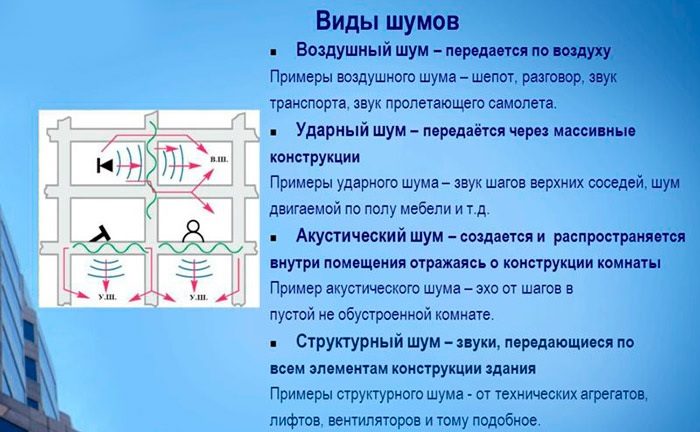
Sounds and noises penetrate our home directly and indirectly:
- Sound waves directly enter rooms through open or loosely closing windows, cracks and poorly sealed gaps between wall panels or walls and window blocks.
- Sounds indirectly enter rooms through low sound absorption building structures and communication channels.
Measures aimed at reducing the noise level in rooms are called noise insulation and sound insulation. Not many people distinguish these concepts, considering that there is no difference between them. And so it was until the experts began to separate them. So what's the difference?
Soundproofing
This term denotes measures aimed at suppressing structural and airborne noises transmitted through building structures and communication systems (structural), and from the sounds of human speech, television and acoustic systems, street noise, etc., penetrating into premises through building structures ( air).
Noise isolation
This is the name of the work on reducing the noise level from falling objects, slamming doors, movable furniture, etc., that is, all sounds classified as impact noise.
Interesting! Most of all, our hearing is annoyed by sounds with a frequency of 50 Hz. Based on this, a regulatory document was developed - SNiP (building codes and regulations) 23-03-2003, "Noise protection", which regulates the permissible sound pressure level in rooms for various purposes, which should not exceed 48 dB in the daytime, and 39 dB in nighttime.
Noise levels and their effect on humans
A sound pressure level not exceeding 55 dB (decibel) during the day and 40 dB at night is considered acceptable. Such an effect on the organs of hearing cannot cause anxiety or somehow affect our psychophysical state, even after prolonged exposure to the organs of hearing. As an example, consider the sound load level from sounds common in everyday life:
- From 0 to 5 dB, the person will hear nothing;
- Sound load from rustling foliage is estimated at 10-15 dB;
- A human whisper at a distance of one meter produces a sound pressure on the hearing organs equal to 20-25 dB;
• the sounds of ordinary human speech are assessed as quite audible, at 40-45 dB; - sounds are clearly audible, with a strength of 50-55 dB;
- loud speech, laughter and screaming at a distance of one meter are classified as “noisy” and exert sound pressure on our hearing with a strength in the range of 60-75 dB;
- The sounds of a running motorcycle with a silencer, a powerful vacuum cleaner, and the sounds of movement of subway cars are considered very noisy;
- Thunderclaps, sounds of an orchestra, helicopter engine, etc. are considered extremely noisy, the sound pressure from which reaches 100-110 dB;
- a noise load with a force of 120 dB from a working jackhammer is considered almost unbearable for a worker;
- The pain threshold is considered to be the load on the hearing organs with a force of 130 dB.
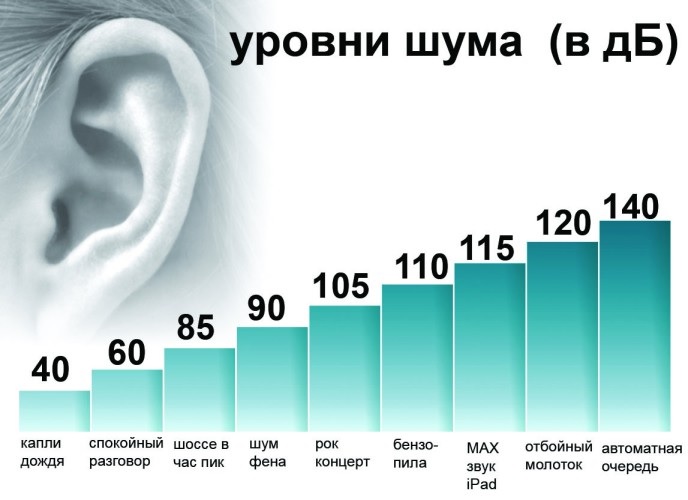
A noise level equal to or exceeding 200 dB is considered fatal to humans. Prolonged stay in rooms with a sound load of 70 to 90 dB negatively affects the state of the central nervous system and can cause its diseases.
Important! To the attention of lovers of loud music! Prolonged exposure to noise levels equal to or greater than 100 dB can cause partial or complete deafness.
Acoustic characteristics of sound-insulating and sound-absorbing materials
Products that prevent the penetration of noise into the room are divided into sound-reflecting and noise-absorbing. The ability to reflect sounds is measured in decibels. The numerical value of the reflectivity is called the sound insulation index and is designated Rw. This value depends on the massiveness of the building structures. The sound insulation indices of inter-apartment partitions, half a brick thick (120 mm), made of clay or gas silicate bricks, are 40 and 45 dB, respectively. For partitions made of aerated concrete stones and gypsum concrete slabs, 100 mm thick, Rw also does not exceed 45 dB.
The index of gypsum plasterboard frame partitions, 80-100 mm thick, and even lower, no more than 35 dB. This is clearly not enough to create comfortable acoustic conditions. Walls and partitions in our homes require additional sound insulation. For this, sound-reflecting materials are suitable, the Rw of which is 18 - 20 dB.
Sound absorption is rated on a scale from 0 to 1, and the higher this coefficient is, the better the sound is absorbed.
Zero sound absorption coefficient means total sound reflection. The numerical value of this characteristic increases with increasing sound frequency. The sound-absorbing properties of the product directly depend on its thickness and become noticeable when it reaches 50mm.
There are three categories of material stiffness:
- Felt and mineral wool products are considered soft, with a high sound absorption coefficient, reaching 0.7 - 0.95, with a maximum effect at a thickness of 100 mm. Their specific weight does not exceed 80 kg / m³
2. Semi-rigid boards include fibrous and cellular boards based on mineral wool and foamed polymers, with a specific gravity of up to 130 kg / m³ and a sound absorption coefficient in the range of about, 5 - 0.8.
3. Solid slabs are considered to have a specific gravity of up to 400 kg / m³, containing granulated mineral wool or suspensions, where vermiculite or pumice is the filler. Their sound absorption coefficient is the lowest, not exceeding 0.5.
The form of production of sound-proof products can be different: in panels, in rolls and plates.
Airborne noise protection
Protection of premises from sounds coming from the street, or sounds from a neighbor cannot be achieved by increasing the thickness of walls and partitions, since with an increase in the massiveness of the enclosing structures, the load on the foundations also increases. As a result, the building will be unreasonably massive and extremely expensive.
The desired effect is achieved by finishing the walls and partitions with multi-layer panels, with alternating sound-reflecting and sound-absorbing layers. The soundproofing properties of the panels increase when there is an air gap between the different layers. As an example, here is the structure of a soundproofing "panel" mounted on the outside of a load-bearing brick wall:
- interior finishing layer (plaster, drywall, etc.);
- load-bearing wall brick thick (250mm);
- insulating mat Isover KL-E;
- layer of wind protection Isover RKL-20;
- section of the ventilated gap of 40 mm;
- facing from front bricks.
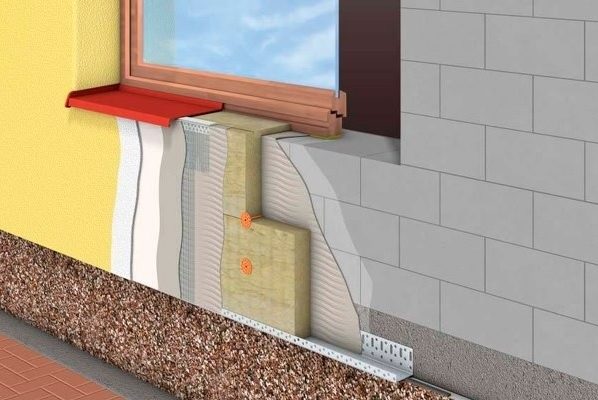
Such a multi-layer structure will be an excellent sound-insulating panel, in contrast to homogeneous ones, the effectiveness of which increases only by increasing the layer thickness.
Rating of quality materials for noise insulation of premises
MAXFORT-SOUNDPRO
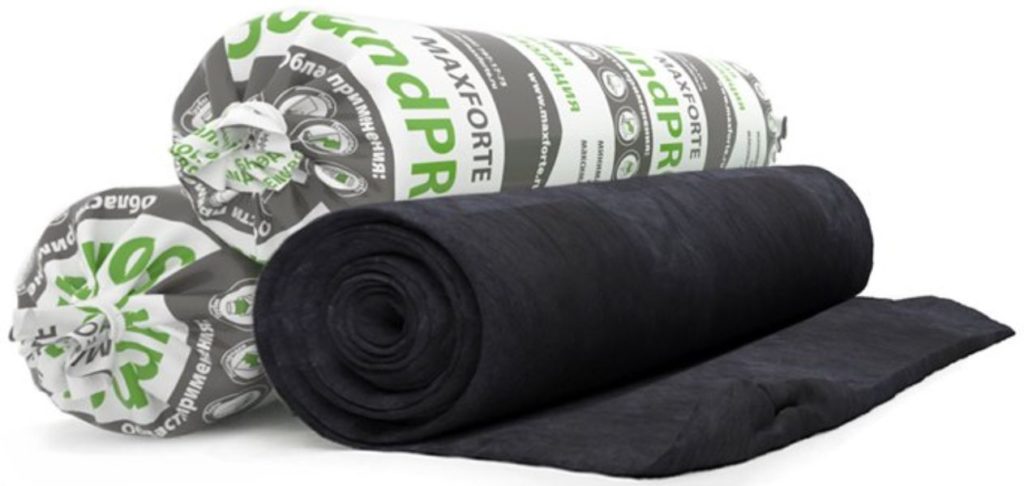
This is a new generation material, which was developed taking into account the theoretical developments of the MAXFORTE company in the field of building sound insulation, as well as the practice of installation activities. It is for this reason that this material not only effectively isolates from noise, but is also easy to install.
With the smallest thickness parameters, which is 12 mm, the product effectively protects against impact and air type noise, therefore it will be a good solution for small apartments where there is always not enough space.
MAXFORT-SOUNDPRO is 100% ECO-safe. The material contains no adhesives or other chemicals. It will be an excellent choice for:
- apartments;
- kindergartens;
- other educational institutions.
In addition, the material is fire retardant (absolutely non-flammable) and heat insulating. There is a certificate from NIISF, which means that the material complies with GOST 27296-87. Rolls of sound-insulating material made of aluminosilicate fibers demonstrate excellent noise absorption performance in various rooms and fully comply with the rules of SNiP used in Russia dated 23.03.2003 "Protection against noise".
The material will be an excellent choice in order to protect the ceiling, floor, walls, pipes and partitions from external noise. It is allowed to be used in both frame and frameless soundproofing schemes.
The average cost is 8,300 rubles.
Advantages:
- ECO-clean: there is no phenol and slag in the composition, there is no unpleasant smell;
- perfectly insulates against impact and airborne noise in various premises;
- rolls are moisture resistant and do not rot;
- fire resistance that meets the KM0 standard;
- small indicators of thermal conductivity, therefore the material is allowed to be used as thermal insulation at any temperature;
- does not attract rodents and insects;
- resistance to the appearance of fungus and mold;
- ease and ease of installation.
Disadvantages:
- not detected.
Drywall Acoustic Gyps
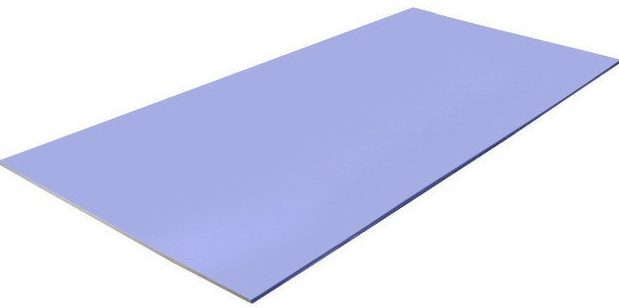
Soundproof sheet of Russian production - Acoustic Gyps gypsum board. Suitable for all types of rooms to improve acoustic comfort. It can be used in frame structures to improve the soundproofing characteristics of walls, and when installing suspended ceilings, as part of soundproof sandwich panels, and as an independent part for cladding walls and ceilings. Its smooth surface is perfect for finishing: painting, wallpapering, etc. Slab size: 1200x2500x12.5 mm. The average cost of the stove is 645 rubles.
Advantages:
- shockproof;
- fire resistant;
- soundproofing;
- inexpensive.
Disadvantages:
- weak bearing capacity, as a result of which it is impossible to mount shelves, hanging TVs, etc. to the wall.
Shumanet BM
Semi-rigid slabs of Russian production Shumanet BM, made of mineral wool with a basalt base. Purpose - to protect premises from airborne noise. The sound absorption coefficient is almost maximum - 0.95 (maximum value - 1.0, means complete absorption of sounds).
It is used as a sound-absorbing layer for frame walls, partitions and suspended ceilings. Slab dimensions: 1200x600x50 mm. The number of plates in a package is 4. The average price of a package will be 800 rubles.
Advantages:
- excellent sound-absorbing characteristics;
- good insulation;
- possesses water-repellent properties;
- affordable price.
Disadvantages:
- significant thickness of 50 mm, when arranging soundproofing of walls and ceilings, taking into account the facing of the plates with plywood, drywall, etc., the interior space of the room decreases.
MAXFORTE-ECOPLITA
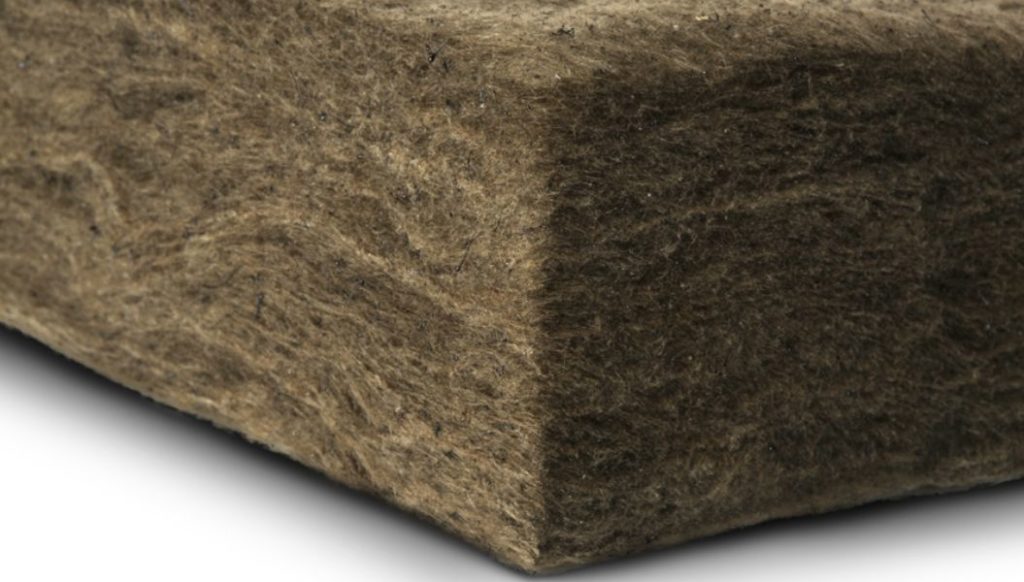
This soundproofing material is made exclusively from volcanic rock (no additives, slag and blast furnace waste). It is produced in the form of slabs, which differ from the competitors in their incredible sound insulation properties, which makes it possible to safely use them in the process of sound insulation of the most difficult structures:
- multiplex cinemas;
- recording studios;
- listening rooms;
- home theaters, etc.
MAXFORTE-EKOPLITA is 100% ECO-safe material. It contains no dangerous binders based on phenolic-formaldehyde resins, which the vast majority of manufacturers of mineral plates cannot boast of.
In addition, the product belongs to the category of thermal insulation materials, since it is fire resistant, which makes it possible to use it as a fire protection.
The average cost is 900 rubles.
Advantages:
- the composition does not contain hazardous astringent resins and phenol-formaldehydes;
- without smell;
- moisture resistant;
- does not rot;
- excellent fire resistance parameters;
- can be used as thermal insulation, since it has low thermal conductivity;
- the material has antiseptic properties, therefore it is resistant to the appearance of fungus and mold;
- does not attract rodents and insects;
- ease and ease of installation.
Disadvantages:
- not detected.
Texound FT 75

Product from the Spanish manufacturer Texound FT 75 ". Two-layer roll product, which includes porous felt and elastic polymer membrane. Sound insulation index Rw is 28 dB (high). Professional sound-reflecting material used in construction, repair, equipment of ordinary and special premises: auditoriums, recording studios, etc. It is used to enhance the sound-reflecting characteristics of walls, floors and ceilings, in frame and multilayer products, as a substrate for floating floors. Shows excellent soundproofing qualities everywhere. The average cost of a roll with an area of 6.6 m2 is 13,140 rubles.
Advantages:
- excellent sound insulator;
- environmentally friendly;
- durable;
- heat and moisture resistant.
Disadvantages:
- as a sound insulator, it works well only in multi-layer structures;
- has a large weight, which complicates installation work, since additional working hands are required;
- expensive.
ThermoZukoizol Standard

Russian-made product TermoZvukoizol Standard. Needle-punched mats made of fiberglass and polypropylene fibers, wrapped in spunbond. The canvas is 10 meters long, 1.5 meters wide and 14 mm thick. Despite its small thickness, it has high sound-reflecting properties. Reduces impact sound load by up to 30 dB. It is used for sound insulation of floors, as a screed substrate, for multi-layer sound insulation of walls and ceilings. Easy. Moisture resistant. Not damaged by rodents. Has the best customer reviews. The area of one roll is 15 m2. The average cost of a roll is 5250 rubles. According to buyers - one of the best value for money.
Advantages:
- excellent sound insulation characteristics;
- lightweight and durable;
- universal, suitable for work in any premises and for processing all enclosing structures;
- inexpensive.
Disadvantages:
- not identified.
Stop Sound Standard

Semi-rigid slabs based on basalt fiber StopZvuk Standard, domestic production. They are used as a sound insulating layer in frame and multi-layer structures of walls and ceilings. Has a very high sound absorption coefficient of 0.8 (almost 100% sound absorption). One package (4 slabs) covers an area of 2.88 m2. The cost of packaging is 845 rubles.
Advantages:
- excellent noise absorbing properties;
- incombustible;
- water-repellent;
- easy, installation is done by one person.
Disadvantages:
- the thickness of the slab of 50 mm does not allow using it for soundproofing the floor.
Isotex Décor 44
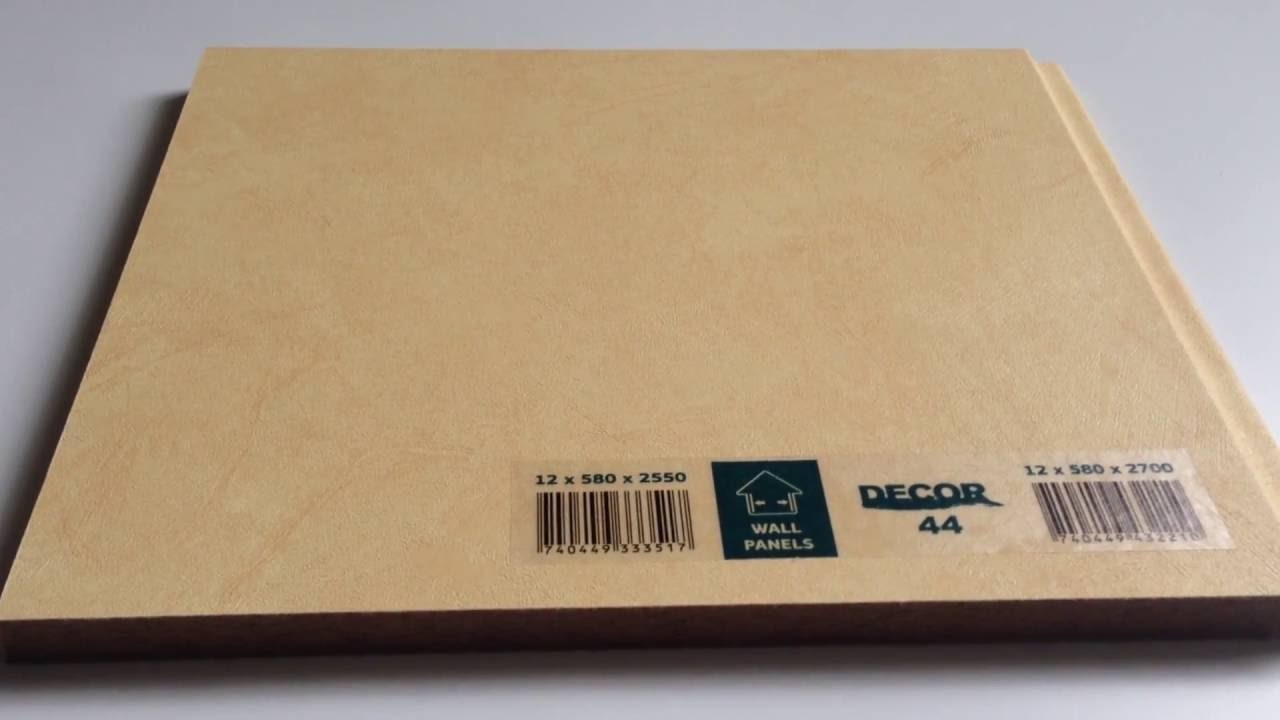
Isotex Décor 44 decorative soundproof wall panels are made in Estonia. They are fiberboard with decorative vinyl covering. Imitating Venetian plaster. They are used in multilayer and frame sound-insulating structures, as well as as an independent facing and sound-reflecting material. Panel dimensions 2700x580x12 mm. The number of panels in the package - 4 pcs. The total area covered by one package is 6.26 m2. The cost of a package is 963 rubles on average.
Advantages:
- natural environmentally friendly product;
- high decorative qualities;
- good sound insulating characteristics, especially in multi-layer construction.
Disadvantages:
- poor load-bearing capacity does not allow to attach shelves, heavy paintings, televisions, etc. to the walls.
Penotherm NPP LE
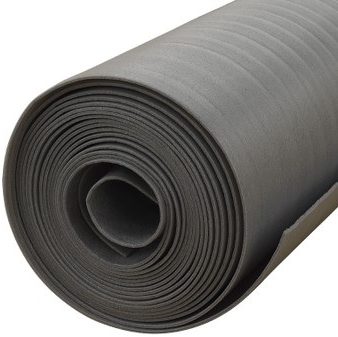
Russian-made product Penotherm NPP LE. It is a foamed polypropylene roll. Blade width - 1300 mm, thickness - 8 mm. A total of 50 meters of noise isolator per roll. It is used as a sound-absorbing substrate in floating floor structures. Noise insulation index - 21 dB. Average cost of 1 lm is 136 rubles.
Advantages:
- durable;
- easy and quick to assemble;
- has a high sound insulation index.
Disadvantages:
- only used in floating floor structures.
Izolon Tape Splen 4004
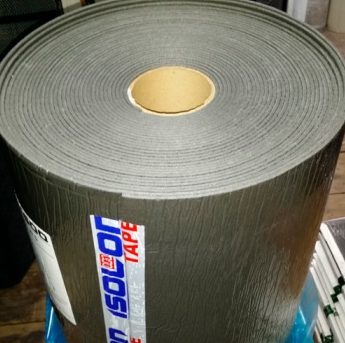
Product of Russian production Izolon Tape Splen 4004. Rolled polyethylene foam with a self-adhesive layer, 100mm wide and 4mm thick. In a roll of 20 meters of material resistant to moisture, mold and dampness with a sound insulation index of 25-30 dB. The indicator is very high. It is used for the manufacture of sound-insulating panels as an interlayer clamped between plasterboard sheets. Cost of 1 lm is 180 rubles.
Advantages:
- excellent acoustic performance;
- protects against moisture and dampness;
- easy;
- has a self-adhesive working side.
Disadvantages:
- not identified.
Izoplat
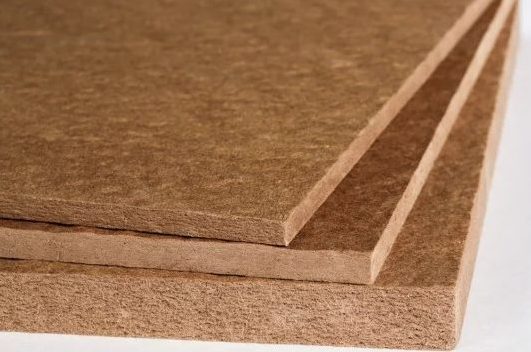
Material of Estonian production Izoplat. Fiberboard plate 1200x277x12 mm.They are used as independent soundproof panels, as well as in frame and multi-layer soundproofing structures of walls, floors and ceilings. Sound insulation index of 23 - 26 dB, high enough to reduce noise in the room to the level of "almost inaudible" without the use of other noise insulation materials. Average cost: 691 rubles per panel.
Advantages:
- easy and simple to assemble;
- protects well against noise;
- good heat insulator.
Disadvantages:
- does not bear loads, is not suitable for hanging shelves, heavy frames, etc.;
- expensive.
SonoPlat Combi
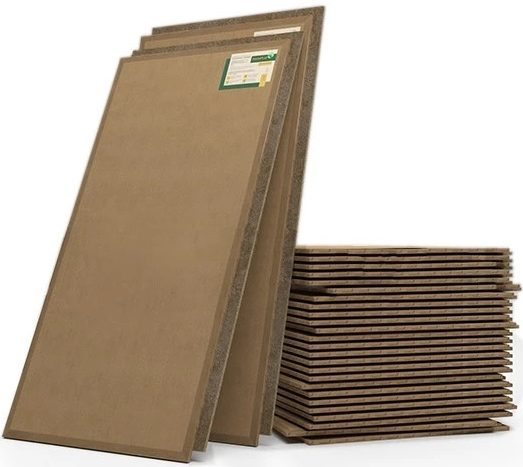
Domestic product SonoPlat Combi, which is very popular in Russia, is of domestic production. The soundproofing panel is an envelope of fiberboard and cellulose, filled with fine quartz. Sound insulation index is 38 dB. This is a very high figure. The material is used for sound insulation of walls, floors and ceilings, in combination with plasterboard, plywood, MDF. Panel dimensions: 1200x600x22 mm. Weight - 13 kg. The average cost of one panel is 1160 rubles. No matter how much it costs, SonoPlat Combi hasn't lost its popularity.
Advantages:
- very high performance of sound insulation;
- panels are easily mounted, cut with a grinder;
- universal, used for soundproofing walls, ceilings and floors.
Disadvantages:
- expensive;
- some qualifications and installation experience are required.
Sound insulation of structures
Having determined the type of sound that should be dealt with, and having selected the materials suitable for these purposes, you can start working on soundproofing the enclosing structures.
Ceiling
Installation of noise insulation of the ceiling implies the construction of a frame made of special metal profiles that are commercially available in sufficient quantities. Soundproof mats are placed in the spaces between the frame profiles. It can be plates of basalt wool StopSvuk BP.
Strips of the same cotton wool are laid between the ceiling plate and the frame girders. At the end of the work, all frame runs are pasted over with Sonoplat vibration-insulating tape. Then Sonoplat plates are attached to the frame girders with self-tapping screws.
The joints between the plates and the openings of the electric cables of the lighting wiring are sealed with a soundproofing sealant Sonetic, after which they dry, they are pasted over with masking tape. A plasterboard sheet is mounted on top of the plates. The ceiling is soundproofed. Finishing and installation of fixtures remained.
Important! The described method of soundproofing ceilings does not provide for the installation of built-in lamps. In this case, the only possible installation is pendant lighting. There are no other options.
After installing the ceiling sound insulation, the height of the room will decrease by 100 mm. Considering that as a result of the work, the sound pressure of impact noise from the neighbors from above will practically come to naught, these losses can be neglected.
Walls
The scope of work on soundproofing walls is not much different from the above-described technology for soundproofing ceilings. Guide profiles are attached along the perimeter of the walls. These can be special metal profiles from the German manufacturer Knauf. Then ThermoZvukoizol is cut so that each sheet is 100 mm more than the ceiling height. This stock is subsequently wrapped at the abutment corners.
Installation starts from the ceiling. The cut panels are fixed with special fasteners. After fixing the TZI, its excess is hammered with a spatula along the perimeter for metal guides. All joints are sealed with tape. Each subsequent panel of thermozvukoizol is attached with an overlap (100 mm) to the previous one.
Then, between the posts of the frame, with a step of 600 mm, transverse strips from the same profile are attached.

Sound-absorbing plates StopSvuk eco-slim are mounted on top of the TZI, the strips of the same plates are slipped between the frame profile and TZI. At the end of the installation of StopZvuk, the profiles are closed with a self-adhesive vibration-proof tape.
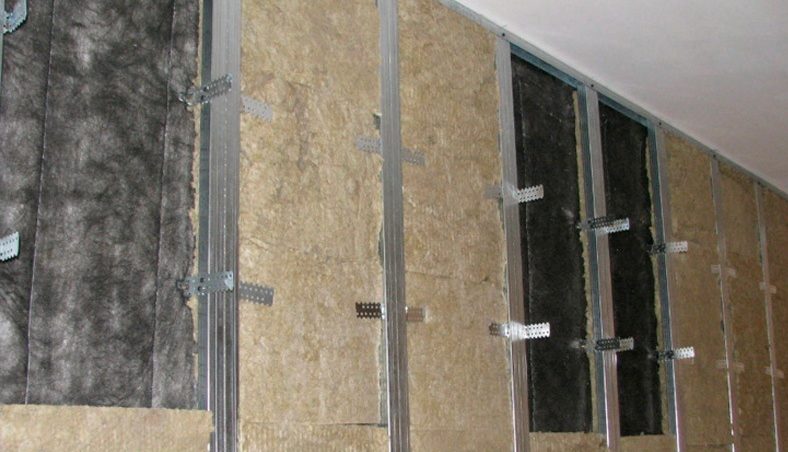
The next step will be the installation of Sonoplat plates, with their fastening to the frame racks with self-tapping screws with vibration pads.The installation process is described in detail in the description of the ceiling insulation works.
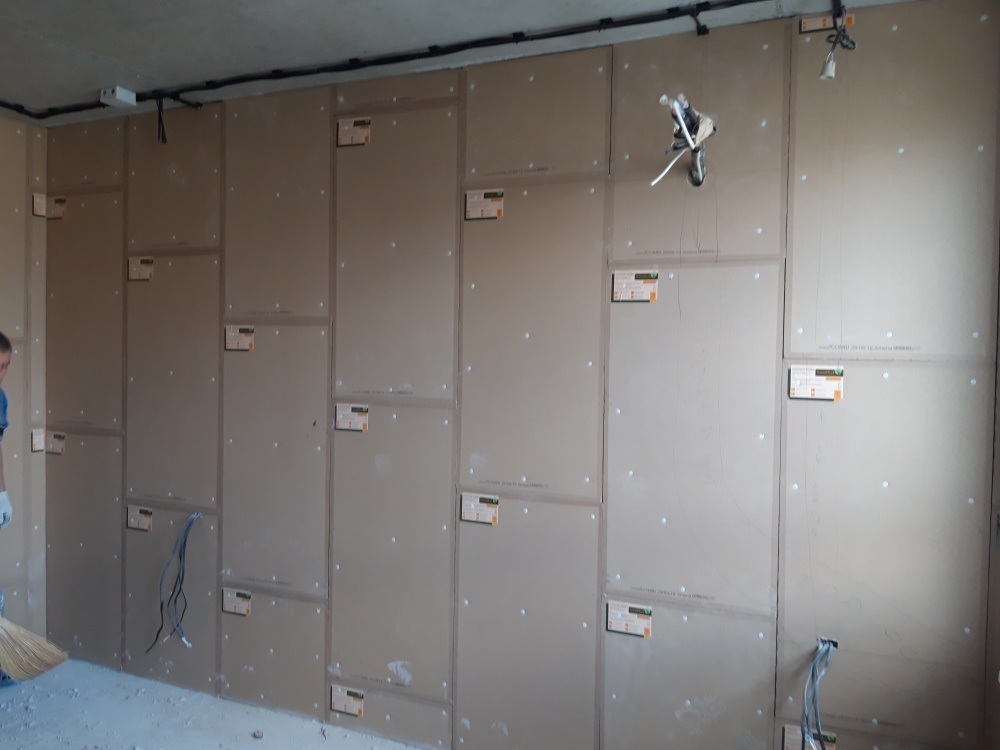
Plasterboard sheets are mounted on top of Sonoplat boards, with pre-drilled holes for sockets and switches.
Important! When performing complex works on soundproofing premises, all openings of electrical outlets and switches are treated with acoustic sealant at the exit points of wires in order to eliminate the possibility of sound waves entering the room.
Alternatively, use wireless radio switches. Then the sockets of the old switches can be completely sealed with mortar. The insulation work has been completed.
Floors
The scope of work on soundproofing the floor is very simple:
- existing coating, screed and debris are removed from the floor surface;
- the surface of the slab is cleaned with a vacuum cleaner and primed;
- a sound-insulating substrate is spread over the entire surface, for example, TZI, 14 mm thick, with 100 mm overlap on the walls at the junction points;
- each next canvas is laid with an overlap of 100 on the previous one;
- the joints are sealed with special tape along the entire length;
- a semi-dry cement screed, 40 mm thick, is laid and leveled on the surface of the TZI;
- The ends of the TZI protruding from under the screed are cut off, the joints are sealed with an acoustic sealant.
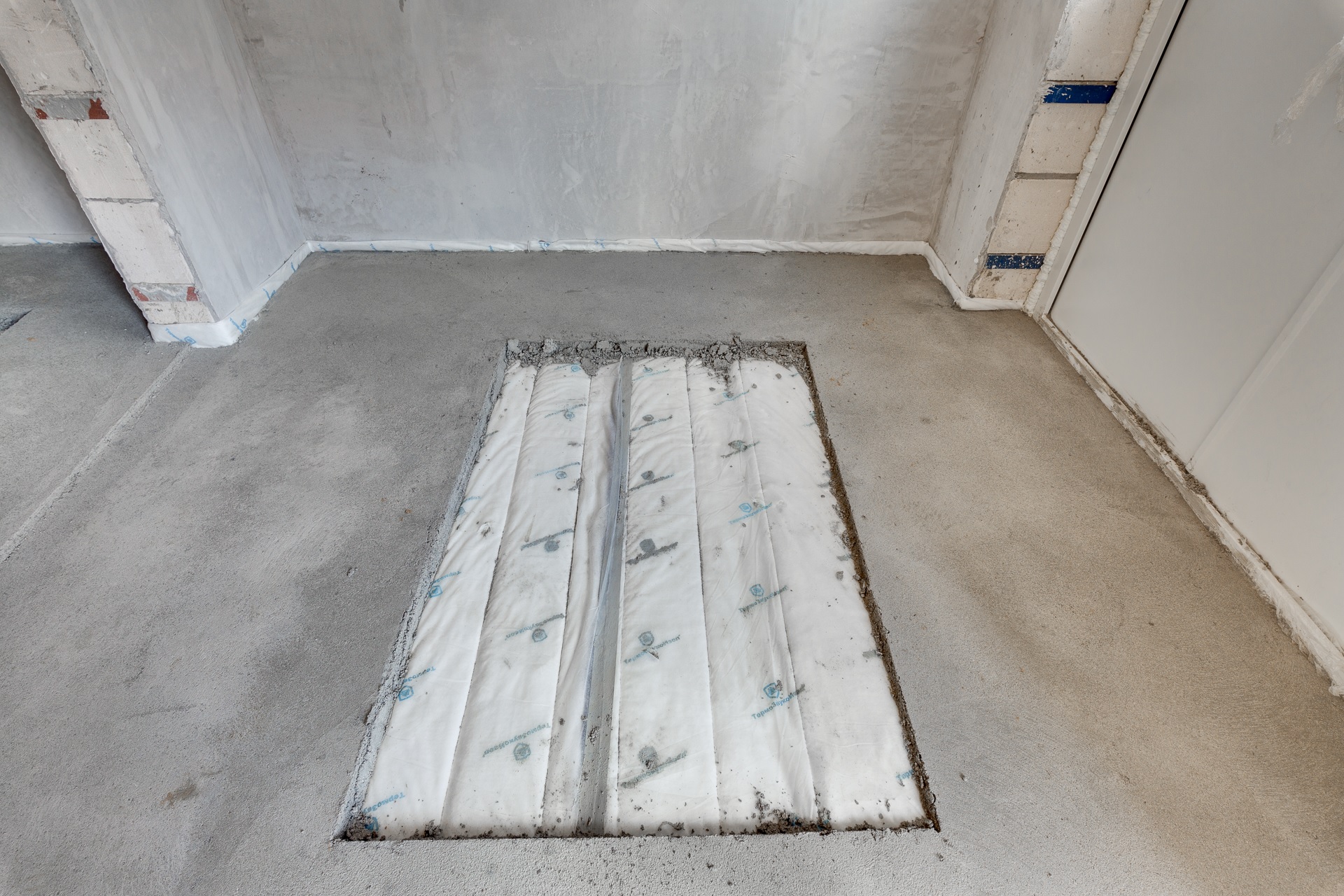
The soundproofing of the floor is complete. It remains to mount the floor covering: linoleum, laminate, parquet, etc.
Important! You should not use any insulation known to you as a soundproofing material. Not all of them have the properties of sound reflection or absorption. Use only special soundproofing products. It is more efficient and often less expensive.
A few words about soundproofing cars
For car owners who spend a lot of time in their cars, it is no secret that prolonged exposure to the sound pressure of street noise and their engine is the cause of rapid fatigue, decreased attention, and nervousness. This can cause an accident. In order not to bring yourself to such a state, to make a long stay in the passenger compartment of the car comfortable, and to improve the sound of the car acoustic system, you need to do the soundproofing of your iron friend. It is quite possible to do it yourself.
Door processing
- The decorative trim is dismantled.
- The metal surface is cleaned and degreased with special compounds.
- The sound-insulating membrane StP Aero is glued to the cleaned surface, bypassing the stiffening ribs, which protects the interior from structural vibrations.
- The second layer on StP Aero is Accent Premium, which has excellent sound-absorbing characteristics. The material must not block the drain holes at the bottom of the door.
- On the side of the salon, StP Aero, the technological openings in the door are closed to create an acoustic box for the car stereo system.
- Biplast is glued to the inner surface of the decorative panel, enhancing the sound absorption effect.
- The decorative panel is mounted in place.
The StP Aero and Accent Premium materials listed here are specially designed for soundproofing vehicles.
Trunk
The algorithm is the same. The casing is dismantled, cleaned and degreased. The wheel arches are processed first. They are pasted over with vibration isolation membranes StP Aero Plus or Bimast Bomb Premium. They also process the trunk floor. Accent Premium is glued on top of it. All canvases are glued end-to-end. The rear wheel wells and the boot lid are treated in the same way.
Hood
Everything is done that is done when insulating doors and trunk. StP Aero is glued between the stiffeners, Accent Premium is glued on top of it.
Which company is the best material to buy
The companies Max Forte, TechnoNicol, Acoustic Group, Techno Sound, and the Ukrainian company AcousticWoll are in the greatest demand among domestic manufacturers of soundproof products. The best producers from far abroad: Swedish - Finnish company Isover Ecophon, German Wolf Bavaria, Danish RockWool, Mappy trademark from Italy, Texdecor from France. It makes no sense to list everyone. Thinking about what is better to buy, listen to recommendations and advice from experienced craftsmen.The seller in the hardware store will tell you what material is better to buy for an apartment, for a summer residence or a country house, and will write you down the functionality of a particular product.
Criteria for choosing a soundproof material:
- First of all, you should determine what kind of noise you need to deal with;
- select structures to be processed: ceiling, walls or floor;
- calculate the area of processed structures and the amount of material;
- ask the seller what sound insulation index (Rw) in decibels the product has and what is its sound absorption coefficient;
- specify the installation method, especially if you are going to insulate on the walls and ceiling yourself, and choose lightweight and easy-to-install products;
- starting a voluminous work, calculate future costs and choose inexpensive products at an affordable price, if your wallet does not pull large costs.
We put a barrier to impact and structure noise
These types of noise enter apartments from neighbors. In modern construction, special soundproofing products are already used, which increase the sound-reflecting and noise-absorbing characteristics of the enclosing structures in apartment buildings. Those who got housing from the era of developed socialism will have to deal with soundproofing with their own hands, fortunately, the modern construction market provides home craftsmen with a wide selection of special mats, blocks, plates and membranes. Let's consider the most common:
Isoplaat

Wood-fiber boards, made using a special technology, using natural resins as a binder, are 100% environmentally friendly product, ideal for interior walls and ceilings. Excellent heat and sound insulation.
Izolon
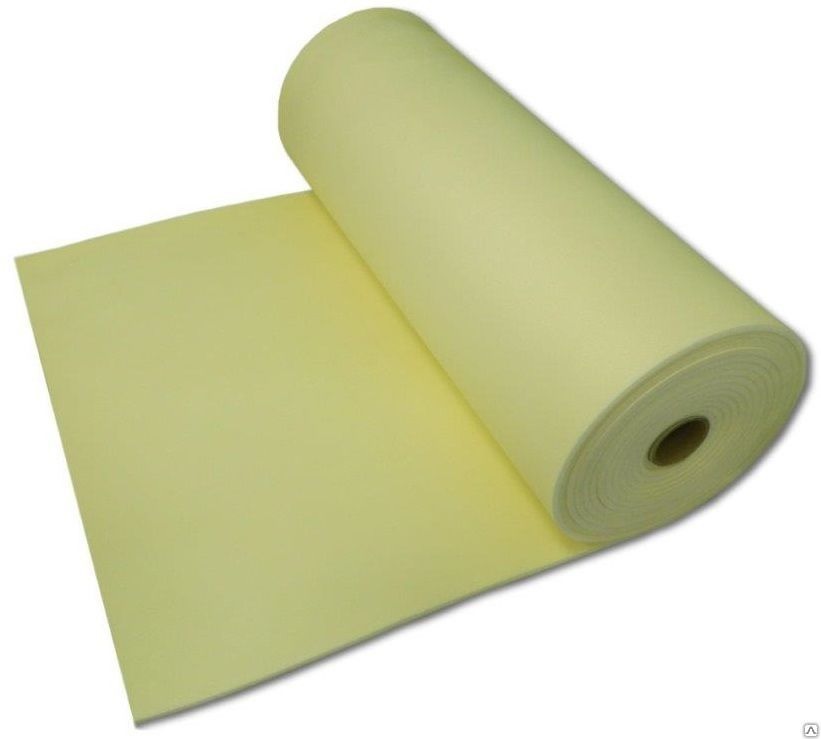
Foamed polyethylene roll, good heat and sound insulation. Most often used for wall decoration.
Penotherm NPP LE
Another roll material made of expanded polypropylene. Differs in excellent heat-insulating, vibration and sound-absorbing properties. It is most often used when installing "floating floors", as a substrate for cement screed.
Isotex

Decorative panels based on Isoplaat fiberboards. It differs from the latter in a finished decorative surface that does not require finishing. It is used as a sound insulator for walls and ceilings. The panels are connected to each other in the same way as a laminate (tongue-and-groove locks). Wall panels are equipped with locks on both sides, ceiling panels on four. Installation does not require special training and qualifications. On brick and concrete walls and ceilings, panels are glued with liquid nails. Products are attached to wooden surfaces with a stapler. No preliminary preparation of the walls (cleaning from paint, old wallpaper) is required.
EPPS - extruded polystyrene foam

Produced in slabs, it is most often used as a heat insulator, has good sound-absorbing properties. Having evaluated these abilities, experts are increasingly using it to protect premises from impact noise.
TZI - thermozvukoizol

It is a quite budget mats made of needle-punched (non-woven) fiberglass, protected by a spunbond sheath. Used as a sound absorber and vibration isolator for walls, floors and ceilings.
Texound

Thin and lightweight self-adhesive roll based on the natural mineral Aragonite, polymers that provide the product with viscosity and plasticity. It has excellent sound insulation characteristics, especially in combination with basalt wool and fiberglass. Supplied with an adhesive layer for easy installation.
SonoPlat (sonoplat)
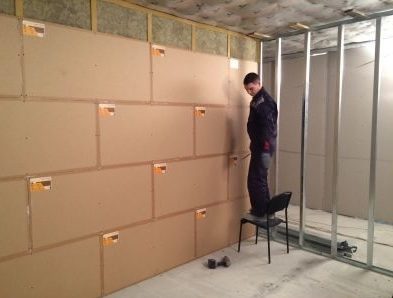
Sound insulating boards, consisting of a dense wood fiber frame with a finely dispersed mineral filling.They are characterized by small thickness (12 mm), large mass and a very high sound insulation index, equal to 42 dB.
StopSound eco slim
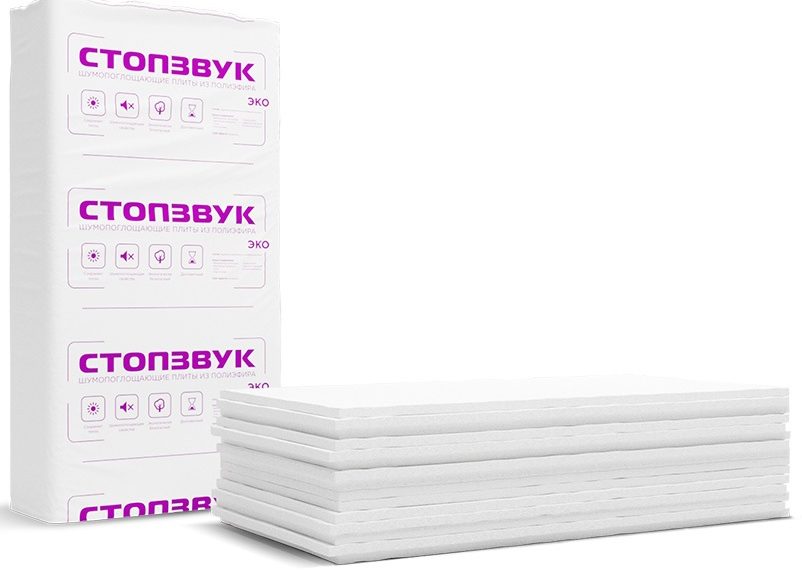
Consists of polyester fibers bonded with hot air. Lightweight, does not dust, does not burn or rot, does not cause allergic reactions. The sound absorption coefficient is quite high - 0.75.
GSP - 100
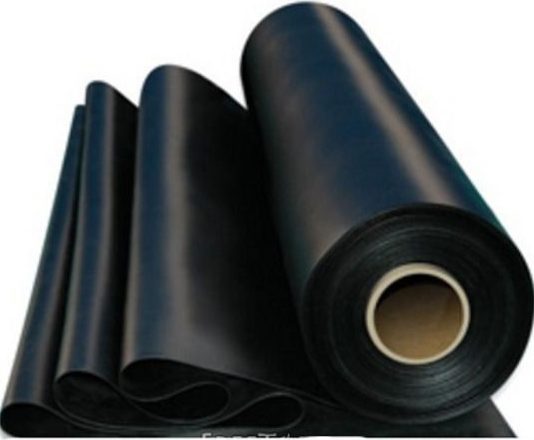
Acoustic rubber. Heat and frost resistant material based on rubber. It is used in the construction of floating floors as a sound-absorbing underlayment under the screed. When soundproofing walls, GPS-100 is laid between two sheets of drywall. The use of acoustic rubber adds at least 10 dB to the soundproofing characteristics of building structures. This means that the noise level is halved compared to the previous one.
The list of modern materials goes on. The main thing I would like to emphasize is that the modern market for soundproofing products is very wide and diverse. This allows you to solve both private and complex problems of soundproofing premises.
| Material name / country of origin | Specifications | average price |
|---|---|---|
| SonoPlat Combi Russia | Soundproof panel. Fiberboard material, cellulose, quartz filler. It is used in homes, offices, apartments. For floor structures, walls, partitions, ceilings. LxWxTmm - 1200 x 600 x 22 mm. Package area 0.72 sq. Slab area 0.72 sq. Density 18.8 kg / sq. Sound insulation index dB - 38 dB The volume in the package is 0.01584 cubic meters. Package quantity 1 pc. | RUB 1160 / pcs. |
| Isoplat plate Estonia | Sheets of wood fiber 277х1200х12mm heat and sound insulating, consisting of 100% coniferous wood fiber (without glue and chemicals). Designed for interior wall decoration in dry rooms, creating effective sound insulation and thermal insulation. They are mounted to the base wall with glue or nailed to the frame structure. They are used as an insulating material in combination with other sheets (gypsum board, OSB, etc.) in floor, wall, ceiling and partition structures. | 691 rubles per sheet |
| Izolon Tape Splen 4004 Russia | Roll material 1000mm wide, 4mm thick, roll length -20m. Sound absorption - 25-30dB. Density 33kg / m3 Temperature range from -60 to +100 degrees C | 180 rubles / r.m. |
| Penotherm NPP LE Russia | Noise source: rearranging furniture, jumping children, clattering heels, falling heavy objects, stomping. Scope: floor. Composition: expanded polypropylene. Roll release form. Thickness 8 mm, width 1300 mm, length 50 m. Package area 65 m²; color gray. Density 40 kg / m³. Impact sound insulation index 21 dB. Flammability group: G4 (highly flammable). Flammability group: B1 (hardly flammable). Smoke-generating ability D3 (high). | 136 rubles / r.m. |
| Isotex Décor 44 Skano Estonia | Dimensions: 2700mm × 580mm × 12mm. Pack quantity: 6,260 m2 / 4 pcs. Package weight: 20 kg. Thickness: 12 mm. The area of one panel is 1.566 m2. Surface: vinyl covered with venetian plaster texture. Base - soft fiberboard; design - plaster Scope: Corridor, balcony, room, office. Type of panels - type-setting rack. Panel type - wall. Material: fiberboard, yellow. Decorative; 25-year warranty. | 963 rubles / sq.m. |
| Stop sound BP standard Russia | It is used as a middle layer in sound insulating structures; Composition - basalt fiber Non-combustible material (class NG); Easy to cut and does not shrink; Low thermal conductivity; Optimum density for heat and sound insulation; Hydrophobized; Dimensions: Slab width: 60 cm. Slab length: 120 cm. Slab thickness: 5 cm. Number of pieces in a package: 4 pieces. Number of m2 in a package: 2.88 m2. Packing volume: 0.144 m3. Net weight: 6 kg. Average sound absorption coefficient 0.8 NRS. | RUB 845 / pack |
| ThermoZvukoizol Standard 10000x1500x14 Russia | Weight 26 kg Properties: soundproofing, soundproofing. Release form - mats. Material - fiberglass, polypropylene LxWxT mm - 10000 x 1500 x14; dense - 136 g / m3 Place of application: for home, apartment. Premises: for living room, bedroom, kitchen, corridor. Applications: for floors, walls, ceilings, partitions. Reducing impact noise by up to 30 dB. Package volume 0.21 m3. Package area 15 m2. | 5250rub / roll |
| Texound FT 75 '' Spain | Acoustic sandwich made of porous felt and viscoelastic polymer membrane. Thickness 14 mm. Sound insulation coefficient 28dB. It is used for soundproofing walls, ceilings, roofs. Used in new construction, reconstruction, in industry. And also in cinemas, theaters, sports complexes, nightclubs, bars, restaurants, hotels, shopping centers and apartments. Number per roll - 6.6 sq.m. | RUB 13140 / roll |
| Shumanet BM Russia | Gross weight: 5.1kg Category: sound insulation average noise absorption coefficient - 0.95. Type: Mineral slab. Length 1200mm; width 600 mm; thickness 50 mm. Package quantity (pcs): 4 pcs. Package area: 2.88 m2 Package weight: 5.5kg Types of work: for ceiling and walls. | 799 rubles / pack |
| Soundproof gypsum plasterboard Acoustic Gyps Russia | Soundproof panel Weight: 33 kg Dimensions: WxDxT m: 1.2 x2.5 x12.5 mm Application - for walls, ceilings. Product properties: soundproof Flammability group: G1 | 645 RUB |
Protecting your home from street and impact noise is a costly and complicated business. Even entrusting the work to a team of craftsmen, it is impossible to be completely sure of achieving the desired result. This topic is worthy of deep familiarization. Otherwise, the money spent on the complex of soundproofing works will simply be wasted. We hope that our review will help you navigate among a considerable number of manufacturers and not make mistakes when choosing modern sound-insulating and noise-absorbing materials for a private house, dacha or apartment, for a car.

